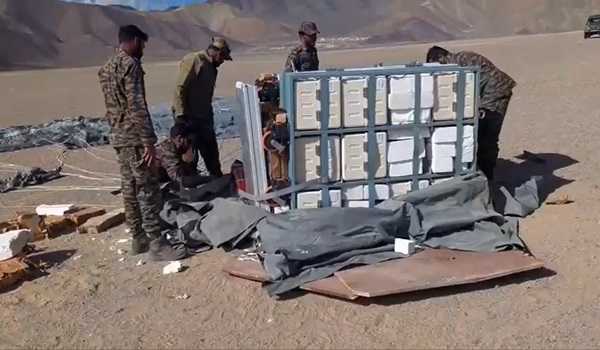
In a landmark operation, the Indian Air Force (IAF) and Indian Army successfully conducted the first-ever precise para-drop of a critical trauma care cube, known as the Aarogya Maitri Health Cube, at a high-altitude location of 15,000 feet. This operation highlights India’s commitment to enhancing its Humanitarian Aid and Disaster Relief (HADR) capabilities.
The Indian Air Force (IAF) and Indian Army collaboratively executed a groundbreaking para-drop operation of the Aarogya Maitri Health Cube at an altitude of 15,000 feet. This trauma care cube, developed under the indigenous Project BHISHM, was airlifted by the IAF’s C-130J Super Hercules and precisely dropped in a high-altitude area. The Indian Army’s Para Brigade ensured the cube’s successful deployment using advanced precision drop equipment.
The para-drop operation was part of a broader initiative aligned with Prime Minister Shri Narendra Modi’s vision to enhance India’s Humanitarian Aid and Disaster Relief (HADR) capabilities. The indigenously developed BHISHM trauma care cubes are designed to provide immediate medical assistance in remote and disaster-affected areas, demonstrating India’s focus on self-reliance and rapid response in critical situations.
“This successful operation showcases the synergy between the Indian Air Force and Army in delivering critical aid to the most challenging terrains, underscoring our commitment to saving lives in emergencies,” stated an official spokesperson.
Project BHISHM, under which the Aarogya Maitri Health Cubes were developed, is a significant step towards bolstering India’s disaster response mechanisms. The project reflects India’s strategic focus on humanitarian assistance, leveraging advanced technology and military precision to ensure timely support in crisis situations.
The success of this para-drop operation not only enhances India’s HADR capabilities but also reinforces the Armed Forces’ role as first responders in disaster relief. The ability to deliver critical care in remote and high-altitude regions significantly improves the nation’s overall emergency response framework.
While this operation marks a significant achievement, the challenges of scaling such initiatives across diverse terrains and ensuring the consistent readiness of equipment and personnel for rapid deployment remain critical considerations for future operations.
A senior military official commented, “The precision and efficiency demonstrated in this operation are a testament to the rigorous training and coordination between our forces, setting a new benchmark for future HADR missions.”
The successful para-drop of the BHISHM trauma care cube by the Indian Air Force and Army highlights the Armed Forces’ readiness and capability to respond swiftly to emergencies. This operation marks a significant advancement in India’s humanitarian aid delivery systems, setting a precedent for future relief efforts in challenging environments.










